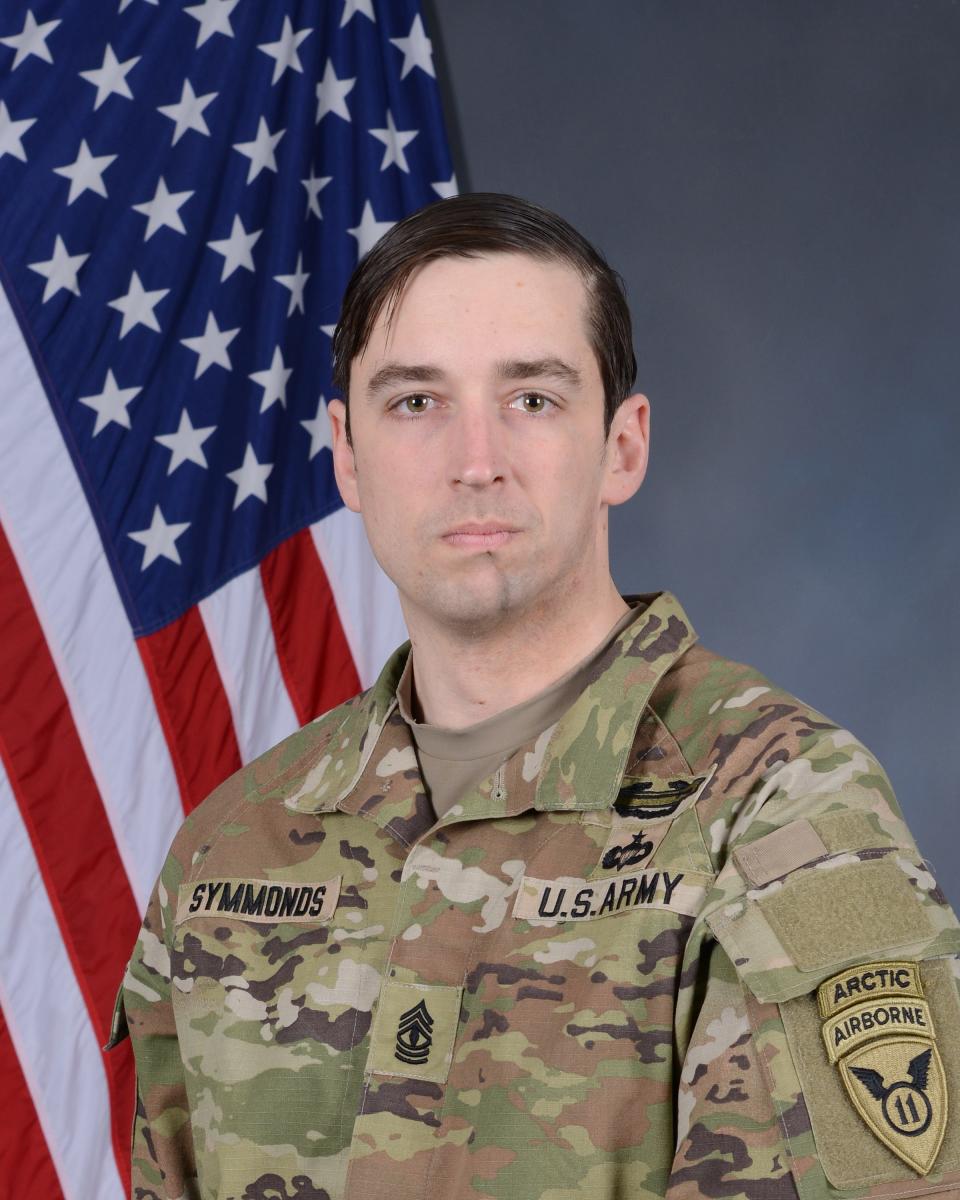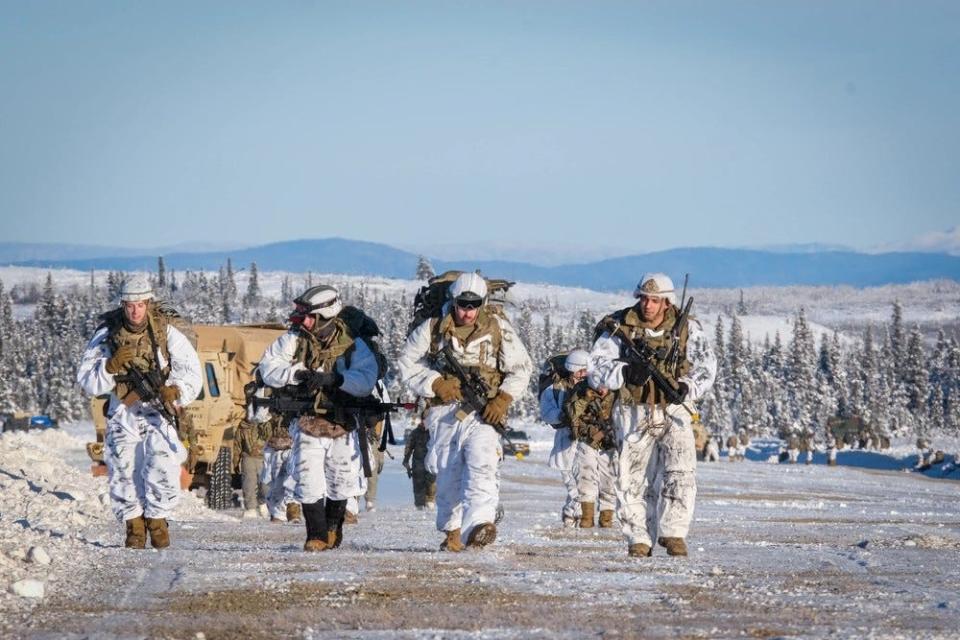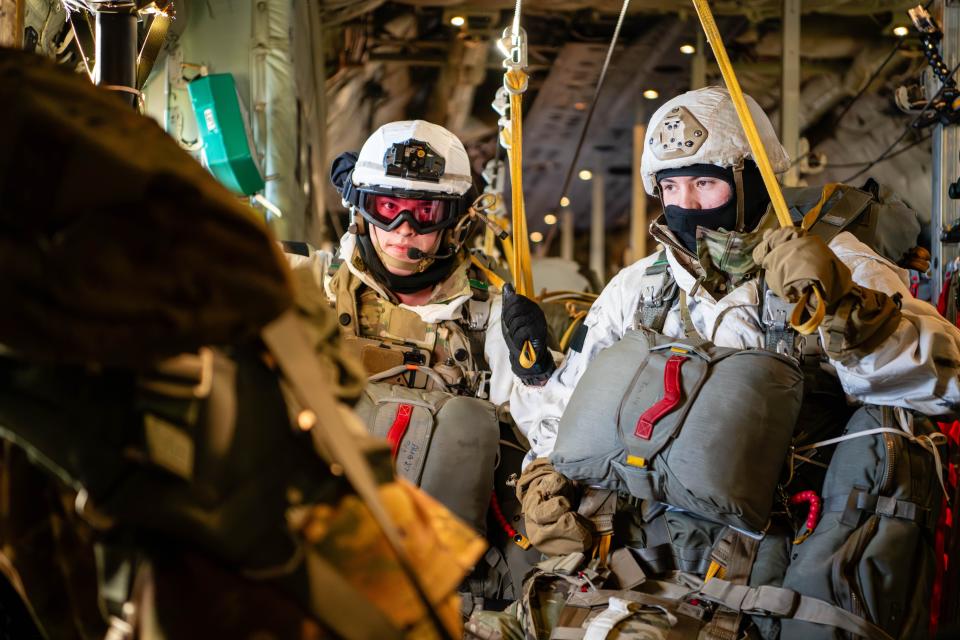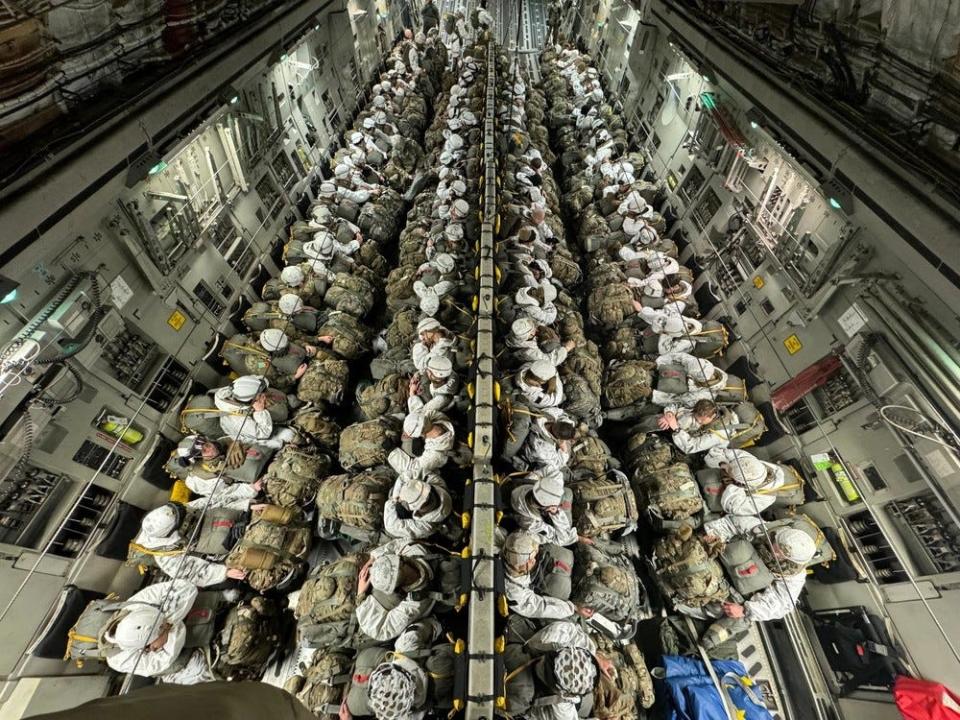I'm a US Army jumpmaster in the frozen Arctic, and the coldest jump I've ever made was -50 degrees Fahrenheit
1st Sgt. Micah Symmonds is a jumpmaster for the Army's 11th Airborne Division in Alaska.
Symmonds said he still gets nervous before jumps, but keeps an outward appearance of calm for his paratroopers.
He's in his element once things get going though, but a lot goes into getting ready.
This as-told-to essay is based on a conversation with 1st Sgt. Micah Symmonds, a US Army jumpmaster in the 11th Airborne Division based in Alaska. It's been edited for length and clarity.
To be a jumpmaster, you need to be a good leader. Attention to detail and being able to exude calmness for your paratroopers before a mission is important, even if I'm still nervous in the preparation for it. Once the ball starts rolling though, I feel in my element.
I've had over 60 jumps, and I still cheese out over it every time. It's a huge adrenaline rush every time, and if you're not feeling that, then it's probably time to retire. There's a reason why so many people choose to be in an airborne division for their entire career.
I've been able to jump into Guam, Australia, Thailand, and the Philippines. I've also been stationed in Kuwait and have gone around the Middle East. Especially being in the 11th Airborne Division, we have a very unique geographical position, so we're able to reach a lot of places in the Indo-Pacific region.
Jumping in the freezing cold

Jumping in the Arctic, the biggest change is what you're wearing on your body depending on the temperature. It's very different than jumping into Thailand, for example.
The coldest I've ever jumped in was -50 degrees Fahrenheit. I was wearing a balaclava, goggles, gloves, and vapor barrier boots on that jump. But I wasn't wearing any sort of insulating clothing on my body because inside the aircraft, the temperature is about 40 to 50 degrees Fahrenheit. I don't want to sweat as I exit in that environment, so I keep my insulating layers in my rucksack.
Packing, especially of insulating layers, is the huge difference between our summer and winter jumps. And we're packing a lot of water and water purification materials, or a stove and fuel to melt snow.
The hardest part is balancing what soldier gear you need with what kind of life-saving gear you need. You want your paratroopers to be safe and have all the stuff to make them comfortable in the cold weather, but having a rucksack in excess of 100 pounds isn't sustainable to jump and do a mission that can last weeks or months.
Having to play that balancing game between what is inside your rucksack and on your person versus what can be delivered later is a very fun and challenging game in the Arctic.
Can't miss anything that would injure a jumper

When you are training to become a jumpmaster, there is a very high standard for what you need to do at the schoolhouse.
Inspecting paratroopers before a jump — when you're meticulously going item by item on each jumper and checking for each item's serviceability and that everything is in the correct configuration to exit the aircraft — is a pretty daunting task. You can't miss any major deficiencies that would cause injury to a jumper on that.
You also have to learn all of the equipment nomenclature. Each piece has its own special Army name that usually doesn't make sense in regular English, but you just have to learn it and know what it means.
So, for example, instead of saying something like helmet pad, it would be referred to as a front trapezoid pad, which refers to a very specific piece of equipment. Another is a rubber band, which is called a retainer band.
Specific words have specific meanings. If I just ask for a rubber band, I could be asking for any sort of thing. If I ask for a retainer band, I know beyond a shadow of a doubt that I'm getting this specific piece of equipment that everyone in the operations knows. If I ask for a helmet pad, there are about three or four different shapes you could get depending on the helmet you're using.
It is all about having it down and knowing exactly what you need in the heat of the moment, and that can be vital in terms of timing and communication.
Three opportunities to make the jump

Jumping has that extra thrill, and there's a special camaraderie that comes with being in an airborne unit. And then becoming a jumpmaster, you're a leader in that organization, you really need to show the want and drive.
Missions are sort of like a leveling event where it doesn't matter who you are. We're all paratroopers, and we're doing our jobs, helping each other rig and checking for safety for the person in front of you and trusting the person behind you to check your chute.
On each jump, you're generally exiting from both parachute doors of an aircraft, and each door will have a jumpmaster. Once the green light comes on, meaning that we're safe to exit paratroopers, most people click right into their training and know what they're doing. They've prepped for this. They're ready to go.
Each trooper gets three opportunities to go and if they don't go, for whatever reason, they're getting removed from the door and told not to touch their equipment. They'll fly back, and then a jumpmaster who wasn't a part of the team will look at their equipment and chute thoroughly for a technical inspection.
Basically, we want to make sure we're giving the paratrooper every benefit of the doubt that they didn't just get scared before the jump but maybe found something wrong in their equipment.
If nothing is wrong, it goes up a chain of command to make a determination whether that trooper should do some remedial training or a larger discussion about the mission and what's expected of them. This is all exceedingly rare, but there is a plan if it does come up.
Hitting the ground the right way

Paratroopers go through a lot of training, and then before a mission, we rehearse the jump, how they're going to exit the aircraft, what they need to do while they're in the air, and how to land properly.
Once you load onto the aircraft, you can wait to jump anywhere from 20 minutes if it's at your local station to 18 hours if you're traveling far. You wait for the 20-minute call, then the 10-minute call, and you stand up and hook up. Depending on the aircraft, there can be different configurations, but there's always going to be an anchor line cable, which is just a thick metal cable that runs down the entire body of the aircraft.
And once you jump, there's obviously a correct time to pull the parachute and best ways to land, which is with your feet and knees together, slightly bent, and basically you want to hit the ground with the balls of your feet and just kind of roll along, trying to let the energy dissipate.
Landing in the Arctic is a gamble. Even if you're coming down in what you think is a blanket of light snow, it could be hard ice and it's almost like hitting concrete. There are challenges in other places as well though. In Thailand or Australia, for example, you could have a nice sandy landing or sand that's sun-baked and hard. So it's really hit-and-miss.
The training for landing is extremely important because you need to be able to land regardless of the environment, regardless of what's happening, and still be able to go and achieve whatever the objective is at the time.
Read the original article on Business Insider

